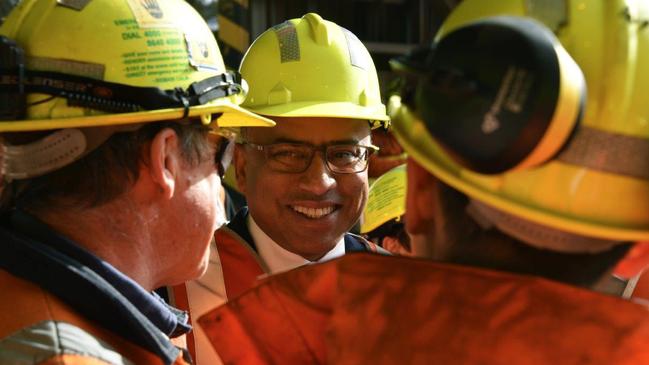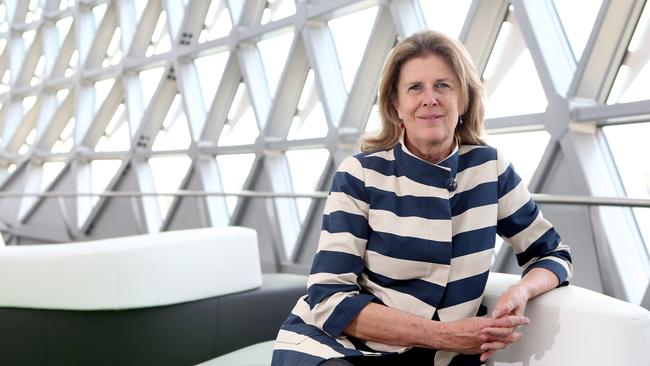South Australia’s rising optimism bring new opportunities as gloom bubble bursts
SOUTH Australia’s doom and gloom bubble appears to have burst with the Sunday Mail’s latest Your Say SA survey showing a healthy rise in optimism over the past 12 months.
- FULL RESULTS: See all the findings from Your Say SA 2018
- YOUR SAY SA: Canberra chaos boosts both SA leaders
READ BELOW: ‘Why we choose to bring up our kids in SA’
READ BELOW: It’s no fluke we’re feeling happier
HARNESSING a new and rising wave of optimism among South Australians is critical to driving up the state’s economic, social and cultural wellbeing, experts say.
The Sunday Mail’s annual Your Say SA survey shows an extraordinary upturn in optimism about the state’s future.
More than 4000 people took part in the 2018 survey, with more than 60 per cent describing themselves as either “somewhat optimistic” or “very optimistic” about SA’s future, compared with just 40 per cent last year.
Responses from other survey questions show we believe SA is now a better place to live for various social demographics and, critically, there is a big improvement in how we see our state as a place to run a business.
The state’s business leaders and key academics say while they’re not surprised by the buoyant upswing, it is even more pronounced than they’d expected.
Gabrielle Kelly is the director of SAHMRI’s Wellbeing and Resilience Centre and says the flow-on effect of optimism is far-reaching.
“Optimistic people, with moderate to high wellbeing make better health choices and stay healthier for longer,” she said.
“They have fewer sick days. They are more productive. They cost less to small business. They are more creative and resilient as entrepreneurs.”
Statewide Super chief investment officer Con Michalakis says there is no doubt the “mood has lifted” in SA.
“This time a year ago there were still the lingering effects of the power blackout (but) we’ve turned a corner and people are feeling more optimistic now than they were 12 months ago,” he said.
“Generally, when we feel positive about ourselves and the economy, businesses or consumers invest and spend.
“Families are seeing a growing economy (it can grow more), we are seeing unemployment come down (it needs to come down further) and people are seeing a future for their kids and grandkids and that’s a good thing.”
Mr Michalakis predicts the new wave of confidence will help drive more growth in the future.
“There are some key things we do well here, such as education, professional services, agribusiness, the wine industry … (we’re setting ourselves up as) a burgeoning centre for emerging technologies and new businesses.

“The idea of encouraging businesses into the state is good but we also want to see new ideas and locals start to develop businesses here that can be grown interstate and internationally.”
Adelaide futurist Kristin Alford, who is also the director of the Museum of Discovery (MOD), says there has been a tangible shift away from focusing on the negative, to the positive.
“The economic discussion is (now) about creating and building new businesses and I think that helps create a more positive vision … as a state, we are no longer focused on the looming closure of Holden,” she said.
“Our state relies on a thriving arts sector with festivals and grassroots companies creating conditions for social glue and creative reflection, and this should be nurtured.
“(We) are rightly focused on wellbeing and resilience in schools and workplaces which enables communities to be more comfortable taking risks and therefore embracing change.”
University of SA urban planning specialist Johannes Pieters said people had taken confidence from the way the state mitigated the impact of negative events such as the Holden closure.
“People are observing the completion of major infrastructure projects (even if there are delays) and there is a sense of security knowing that governments are thinking ahead,” he said.
“The purchase of the Whyalla Steel works by (Sanjeeev) Gupta’s company has turned around the pessimism in that community and may also provide a sense of comfort to people living in other regional towns.”
After years of oversupply and subdued prices, the state’s wine industry is also looking up. McLaren Vale winemaker Chester Osborn is even daring to talk of a “looming undersupply”, driven by demand from China.
“Everything is bit more buoyant, the grape prices are going up, everyone is much more positive and the number of tourists coming to the region has grown tremendously over the past few years — that’s good for everyone,” he says.
And the colourful winemaker’s tip for the perfect drop to celebrate our flourishing optimism?
“Definitely d’Arenberg’s Dead Arm Shiraz, 2015 … it’s one of the best vintages made,” he laughs.

Why we choose to bring our kids up in SA
WHEN it comes to bringing up kids, Kate Bolton and Simon Hardman don’t believe you can do much better than Adelaide — and they’re not alone.
More than 70 per cent of those who responded to the latest Your Say SA survey believe South Australia is a good place to raise a young family, up from just under 60 per cent last year.
The couple, both 39, who has lived interstate and overseas, moved back to SA to be close to family after the birth of their second child and accountant Simon now regularly commutes to Sydney as well as New Zealand in his finance role at Microsoft.
Lifestyle was a big drawcard, says Kate.
“Better value when buying our home, the proximity of the city, beach and wine regions, and the lack of traffic congestion were all factors we considered to be in favour of moving back to Adelaide … colleagues from Sydney will usually comment on the great value of residential property in Adelaide.
“(We love having) great recreational spaces close by, such as beautiful national parks and the terrific playgrounds spread throughout the city and suburbs (and) Simon is able to cycle to and from work, as well as into the hills on weekends.”
Kate says the family also enjoys the ease of being able to attend arts and sporting events throughout the year.
UniSA’s Planning for Healthy Cities course co-ordinator Johannes Pieters says the state’s relative affordability when it comes to housing shouldn’t be underestimated,
“It is still possible to buy a house in areas with good amenity in Adelaide and the regions without going into housing stress,” says Dr Pieters.
“(Adelaide) provides young parents with excellent public (and private) schools, it has progressive councils investing in sporting and general recreational areas with plenty of green space, especially in the outer metropolitan areas.
“(And) access to primary and tertiary health care is, despite some issues, very accessible.”
If there’s a downside to life in SA, it’s the “quality” senior career opportunities, says Kate.
And she does worry about the job opportunities that’ll be available to her children.
“Having lived in Singapore and Sydney, we’re aware how broad and diverse the career opportunities are outside of Adelaide,” she said.
“Opportunities will exist in Adelaide but we doubt they’ll be better than those available in the larger cities.”

It’s no fluke we’re feeling happier
OPINION: AM I surprised that South Australian optimism has improved greatly over the past year or that we see our future as bright, despite the global gloom and avalanche of complexity we now swim in? No, I am not.
There is a strong impulse towards wellbeing in this state which underpins these results. SA is now globally recognised as a state of wellbeing, a place where people know the science of how to be, stay and become psychologically healthy.
We have an unstoppable cultural movement in SA towards better wellbeing and the ripple effect is at work. Why does it matter? Optimistic people, with moderate to high wellbeing, make better health choices and stay healthier for longer. They have fewer sick days. They are more productive. They cost less to small business. They are more creative and resilient as entrepreneurs.
People who can balance their thinking don’t tend towards the coward punch or domestic violence and they can maintain healthy relationships, using the skills of wellbeing and resilience.
People with low wellbeing are five to eight times more likely to become mentally ill.
More than 4000 people have now been trained in the skills of wellbeing and resilient thinking in SA as part of groundbreaking courses run by SAHMRI’s Wellbeing and Resilience Centre – these include prison officers, health workforces, local government staff, older people in community, parents and young people.
Add to this the estimated 20,000 people who have attended lectures or workshops about improving psychological health and the hundreds of local schools now delivering world-leading lessons in positive education and wellbeing aimed at boosting the ability for strengths-based thinking, optimism, gratitude, meditation, better connections, resilience and better problem solving. Here in SA we know, based on science, the skills of wellbeing and resilience are learnable, teachable and measurable – and what we are doing in this area is being watched around the world.
This long wellbeing story has a way to go yet in SA. Mental fitness is like physical fitness, you have to build it.
SAHMRI and its many SAwellbeing collaborators are leading the world in building wellbeing at scale. I expect we will look back and see that this was as important as the submarines in SA’s bright future.
SAHMRI Wellbeing and Resilience centre director Gabrielle Kelly
